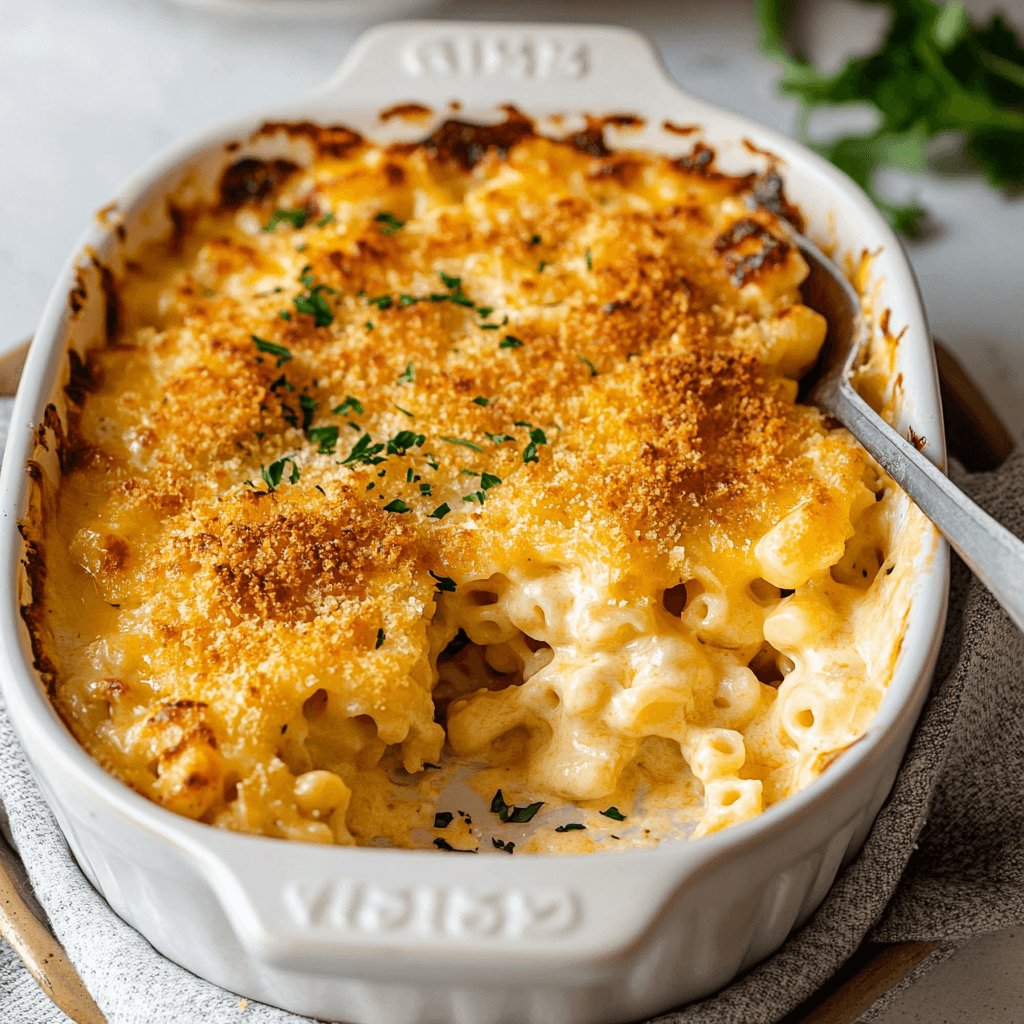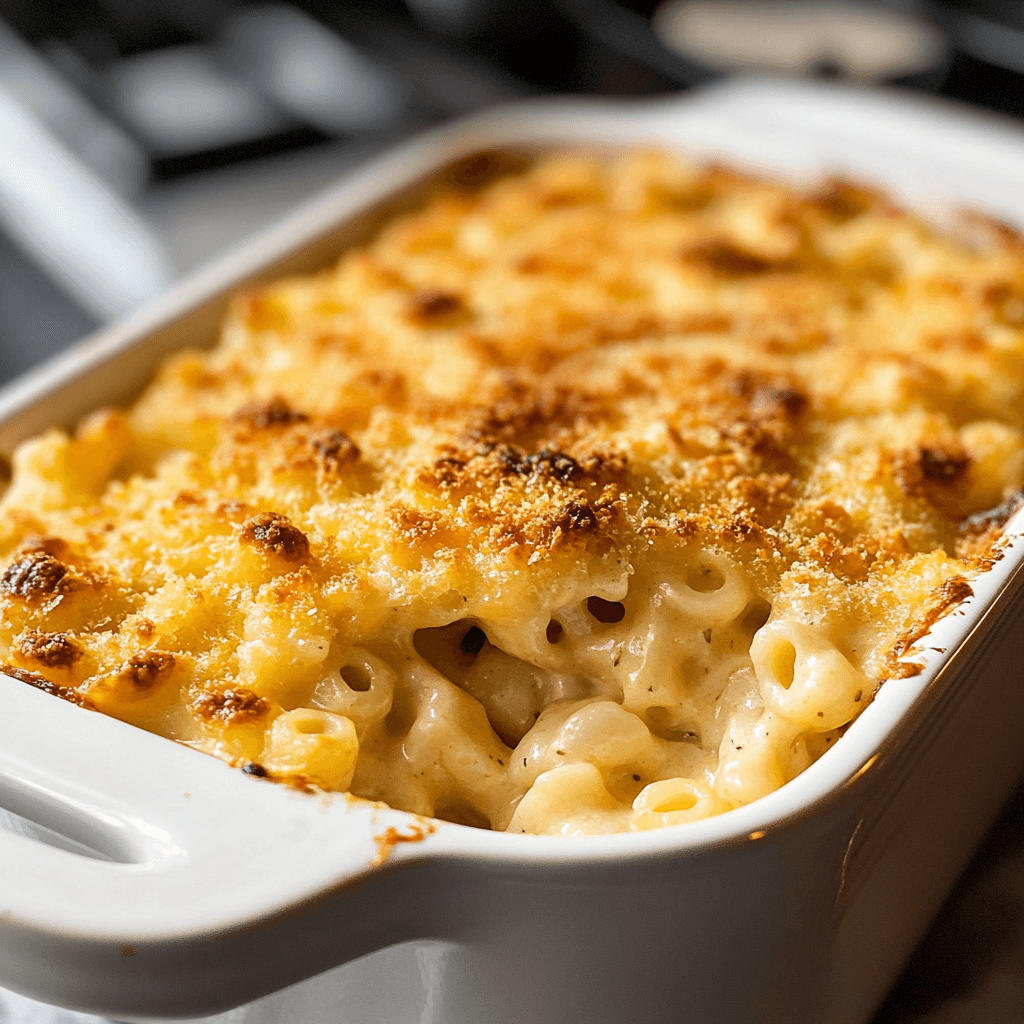Old Fashioned Baked Macaroni and Cheese: A Comfort Food Classic

There’s something timeless about baked macaroni and cheese. It’s the kind of dish that warms you from the inside out, offering a taste of childhood with every bite. Whether you’re making it for a holiday meal, a potluck, or a cozy dinner at home, this old-fashioned version focuses on rich, familiar flavors and simple techniques. It’s not about reinventing the wheel; it’s about honoring the recipe’s roots and creating something delicious that brings everyone back for seconds.
In this guide, we’ll take you step-by-step through making an authentic baked macaroni and cheese, just like your grandmother might have made. From selecting the right cheeses to getting that perfect golden crust, we’ve got all the details covered.
Why Old Fashioned baked Macaroni and Cheese is Special
What makes this dish a standout is its simplicity and focus on the basics. At its heart, it’s just pasta, cheese, and a touch of care. While modern takes might add exotic ingredients or unnecessary complexity, this version sticks to what works—smooth cheese sauce, tender pasta, and a crunchy topping.
This dish also feels like a warm hug in food form. Its nostalgic flavors remind us of family dinners and special occasions, proving that comfort food doesn’t have to be complicated to be memorable. Plus, it’s endlessly versatile. You can serve it alongside roasted meats, toss in some vegetables for a full meal, or enjoy it on its own for a simple, satisfying dish.
Ingredients for the Perfect Baked Macaroni and Cheese
For a dish that seems so simple, the ingredients you choose play a big role in the final flavor and texture. Here’s what you’ll need:
The Pasta:
- Elbow macaroni (or another small pasta shape): 2 cups uncooked
- Salt: To season the cooking water
The cheese sauce:
- Butter: 4 tablespoons, for richness and to create the roux
- Flour: 4 tablespoons, to thicken the sauce
- Milk: 3 cups (whole milk works best for creaminess)
- Cream: 1 cup (optional, but adds a luxurious texture)
- Cheese: 4 cups shredded (a blend of sharp cheddar, Gruyere, and Monterey Jack is ideal)
- Ground mustard: 1 teaspoon, for a subtle tang
- Salt and black pepper: To taste
- Paprika: ½ teaspoon, for a touch of warmth
The Topping:
- Breadcrumbs: 1 cup (panko works best for added crunch)
- Butter: 2 tablespoons, melted
- Parmesan cheese: ¼ cup (optional, but adds depth to the topping)
Step-by-Step Instructions
1. Start with the pasta.
Begin by bringing a large pot of salted water to a boil. Add the macaroni and cook it until al dente, which means it’s still slightly firm when bitten. Since the pasta will bake later, this step prevents it from becoming overly soft. Drain the pasta and set it aside while you prepare the sauce.
2. Make the Cheese Sauce
The cheese sauce is the heart of this dish, and getting it just right is key:
- Melt the butter: Place a medium saucepan over medium heat and melt the butter.
- Add the flour: Whisk in the flour to create a roux. Let it cook for about 2 minutes, stirring constantly, to remove the raw flour taste.
- Add milk gradually: Slowly pour in the milk, whisking constantly to avoid lumps. Follow with the cream if you’re using it. Allow the mixture to simmer gently until it thickens.
- Add the cheese: Reduce the heat to low and stir in the shredded cheese, one handful at a time, until fully melted.
- Season the sauce: Stir in ground mustard, paprika, salt, and black pepper. Taste and adjust the seasoning as needed.
3. Combine and Assemble
Preheat your oven to 375°F (190°C). In a large mixing bowl, combine the cooked macaroni with the cheese sauce. Stir gently to ensure every piece of pasta is coated. Pour the mixture into a greased 9×13-inch baking dish, spreading it evenly.
4. Prepare the Topping
In a small bowl, mix the breadcrumbs with melted butter. Add grated Parmesan if you like an extra savory touch. Sprinkle this mixture evenly over the macaroni and cheese.
5. Bake to Perfection
Bake the dish in the preheated oven for 25-30 minutes. You’ll know it’s ready when the top is golden brown and the edges are bubbling. For an extra-crispy topping, broil the dish for 2-3 minutes, but watch closely to prevent burning.
Nutrition Information
Here’s a general breakdown of the nutritional value per serving (assuming eight servings):
- Calories: Approximately 450-500
- Protein: 18-20 grams (from the cheese and milk)
- Carbohydrates: 35-40 grams (mainly from the pasta)
- Fat: 25-30 grams (mostly from butter, cream, and cheese)
- Sodium: Around 500-600 mg (varies based on cheese and seasoning)
- Fiber: 1-2 grams (depends on breadcrumbs and optional vegetable add-ins)
Keep in mind, these numbers can vary based on ingredient choices and portion sizes. If you make additions like bacon or vegetables, adjust accordingly.
Tips for Success
- Use Freshly Grated Cheese: Pre-shredded cheese often contains additives that can prevent smooth melting. Grating your own ensures a creamy sauce.
- Balance Creaminess and Crunch: The topping should provide a satisfying contrast to the creamy interior. Panko breadcrumbs work best for this.
- Cook the Pasta Al Dente: Slightly undercooking the pasta helps it hold its shape during baking.
Ways to Customize Your Macaroni and Cheese
While the classic version is perfect as-is, there’s plenty of room to adapt the recipe to your preferences:
1. Add Protein:
Mix in cooked bacon, shredded chicken, or diced ham for a heartier dish.
2. Sneak in Vegetables:
Fold in cooked broccoli, roasted cauliflower, or sautéed spinach for a pop of color and added nutrition.
3. Spice Things Up:
If you enjoy a little heat, add chopped jalapeños, a dash of hot sauce, or a sprinkle of cayenne pepper to the cheese sauce.
What to Serve with Old Fashioned Baked Macaroni and Cheese
This dish pairs beautifully with a variety of sides and mains. Here are a few ideas:
- As a Main Dish: Serve with a simple green salad or roasted vegetables for balance.
- For a holiday feast: Pair it with roast turkey, glazed ham, or prime rib.
- Southern Comfort: Complete the meal with fried chicken, cornbread, and collard greens.
Storing and Reheating Leftovers
If you happen to have leftovers (though it’s rare!), store them in an airtight container in the refrigerator for up to four days. Reheat the macaroni and cheese in a 350°F oven for about 15 minutes, covering it with foil to keep it from drying out. Alternatively, microwave it in short intervals, stirring between heats to maintain creaminess.
A Dish That Feels Like Home
Old fashioned baked macaroni and cheese isn’t just a recipe—it’s a tradition. It’s the kind of dish that makes you slow down and savor the moment, bringing comfort and joy to anyone who tastes it. Whether it’s for a special occasion or an ordinary weeknight, this classic meal always hits the spot.
By following this guide, you’ll have everything you need to create a macaroni and cheese that’s rich, flavorful, and satisfying—just like the ones you remember from childhood. So grab your apron, gather the ingredients, and get ready to make a dish that will leave everyone asking for seconds.
FAQs
What are common mac & cheese mistakes?
Common mac & cheese mistakes can easily spoil this classic comfort food. One frequent error is overcooking the pasta, which turns it mushy and ruins the dish’s texture. Another is failing to season the pasta water with enough salt—this step adds flavor to the noodles. Using the wrong cheese, like pre-shredded varieties, can lead to a grainy or oily sauce because of anti-caking agents. Additionally, skipping a roux or using too little fat can cause a thin or separated sauce, leaving it less creamy and indulgent.
What is in Gordon Ramsay’s mac and cheese?
Gordon Ramsay’s mac and cheese often includes a blend of rich, flavorful cheeses like cheddar and Parmesan. He also incorporates a creamy base made from butter, flour, and milk to create a smooth sauce. For added depth, ingredients like garlic, Dijon mustard, and even a touch of cayenne pepper may be used. Ramsay tends to finish the dish with breadcrumbs toasted in butter for a crunchy topping. It’s a balance of creaminess and texture that elevates traditional mac and cheese to gourmet status.
Why use evaporated milk in mac and cheese?
Evaporated milk is a popular choice for mac and cheese because it provides a creamy consistency without the need for heavy cream. Its concentrated nature gives it a thicker texture, which helps the cheese sauce cling to the pasta. Additionally, evaporated milk contains less water than regular milk, reducing the chance of the sauce becoming watery or separating. It’s also convenient since it has a longer shelf life, making it a pantry staple for spontaneous mac and cheese cravings.
What is the trick to keeping mac and cheese creamy?
The trick to keeping mac and cheese creamy lies in a few key techniques. First, use a roux (a cooked mixture of butter and flour) as the base to stabilize the sauce. Incorporating full-fat dairy products, like whole milk or evaporated milk, also helps maintain creaminess. Adding cheese gradually and off-heat prevents curdling or graininess. Finally, serve the dish immediately after preparation—overcooking or reheating can dry out the sauce. Covering leftovers tightly helps retain moisture for later enjoyment.
Discover Your Next Favorite Recipe Right Here!

